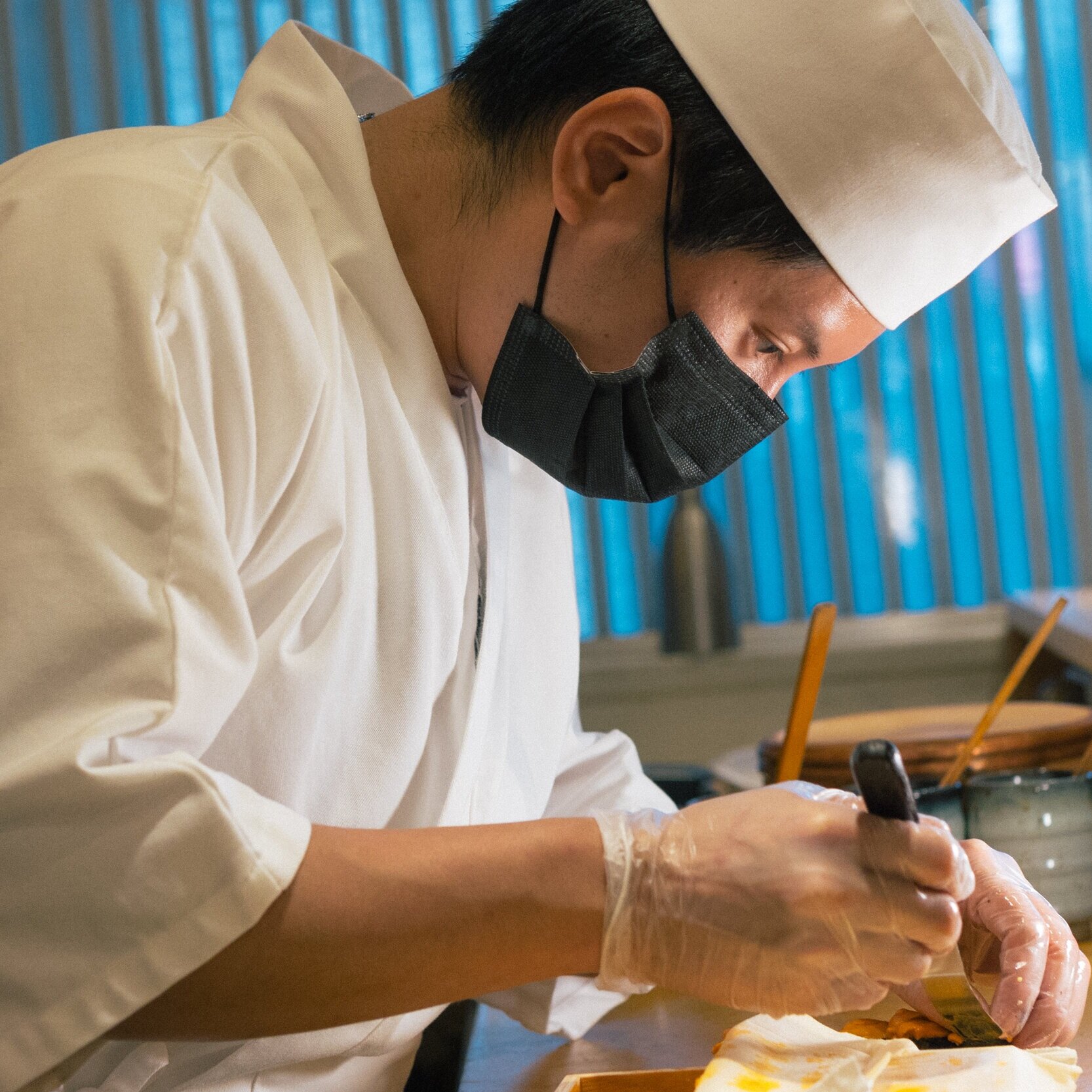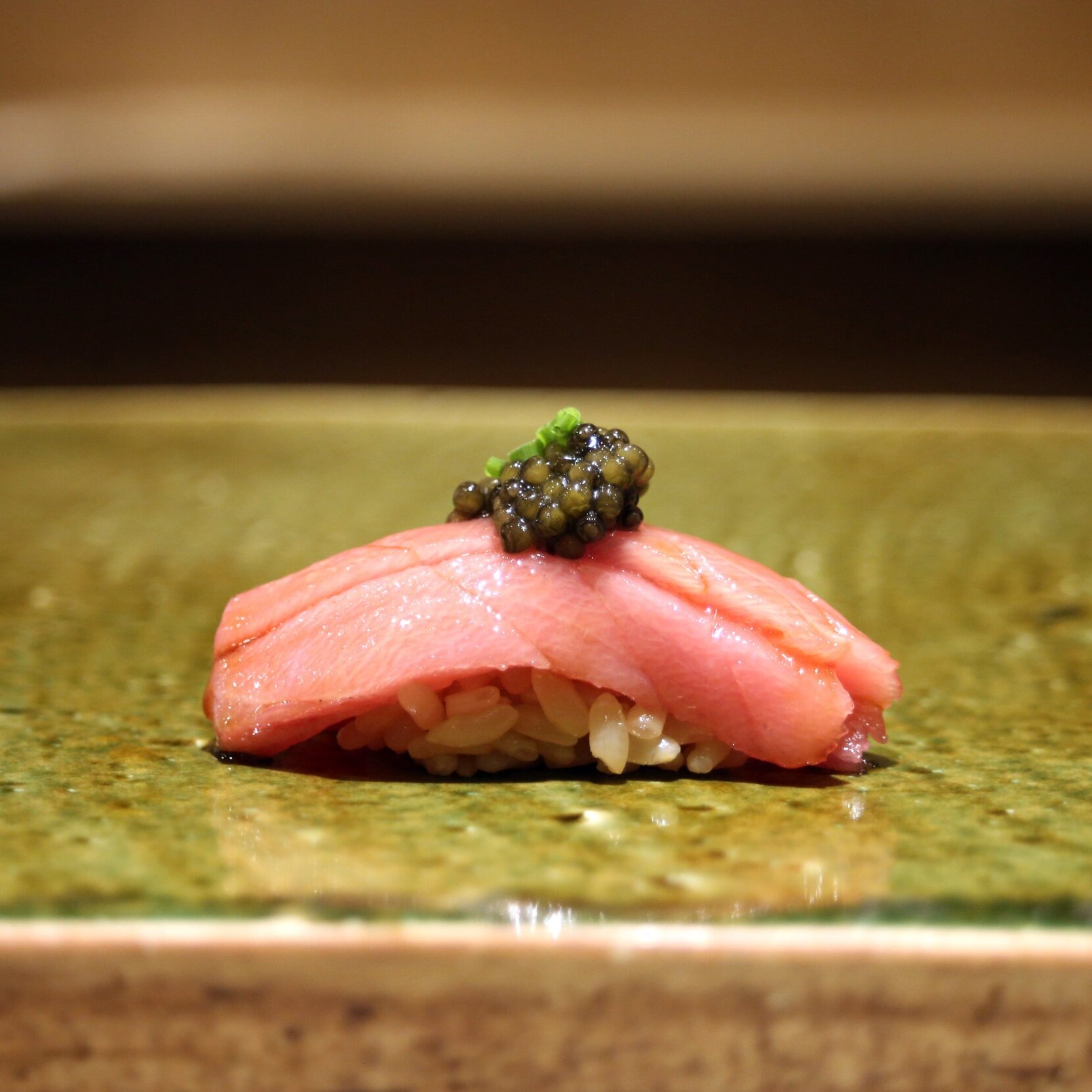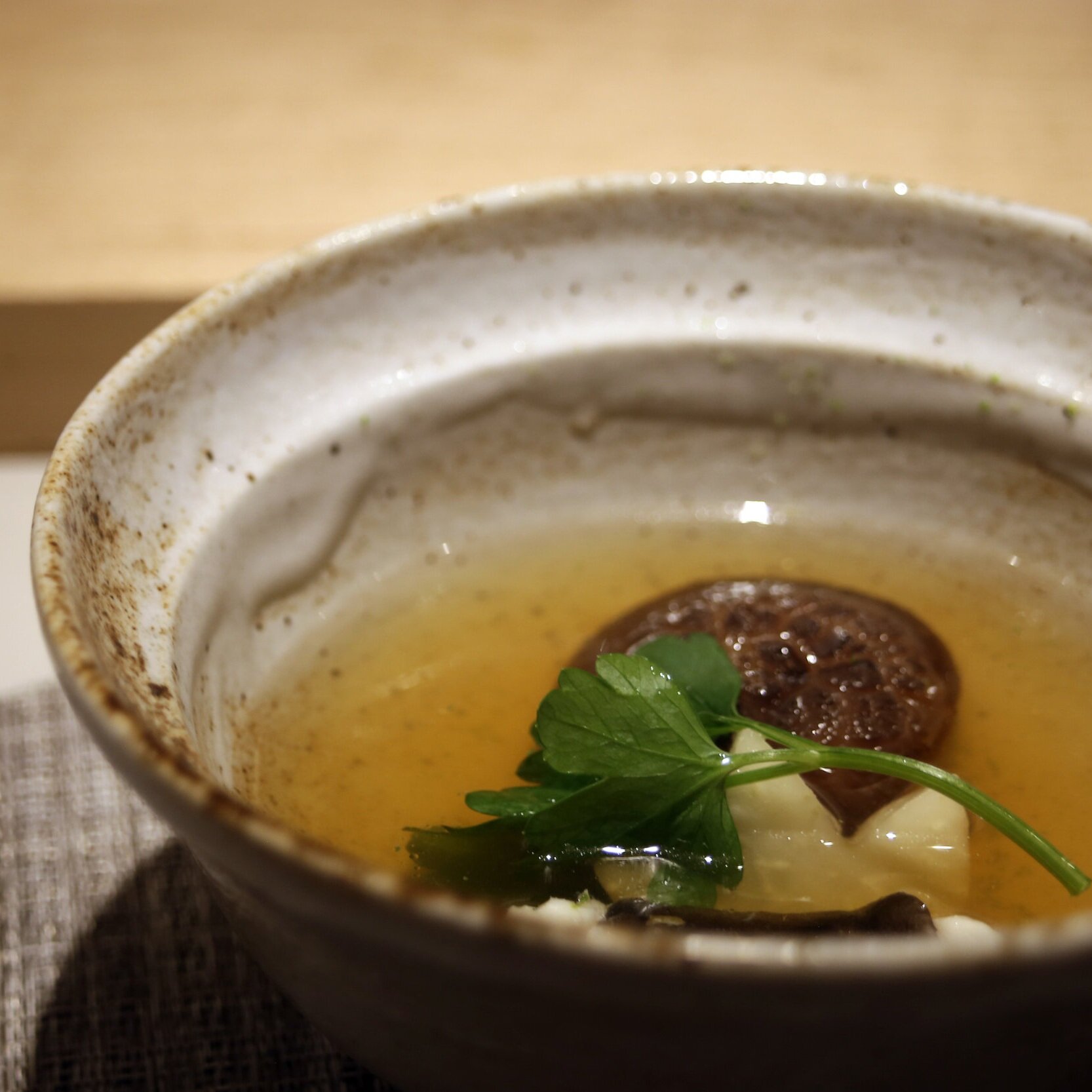How Kōyō Chef Jay Zheng Is Pioneering Haunt Japanese Cooking in Astoria
Reporting by guest writer Kat Odell
In a New York borough beloved for its wide-spanning net of authentic global cuisines, it’s not easy to introduce Queens to a new culinary genre. But when chef Jay Zheng set out to launch Kōyō––an elevated kaiseki-focused restaurant––he became the very first restaurateur in the area to explore Japan’s highest form of culinary art via a seasonal, seven-course tasting menu.
Photo Credit: Daniel Kwak
“[W]e are able to showcase different techniques used in Japanese cooking for various dishes, such as simmered, braised, tempura-fried, binchotan-grilled, smoked, raw, [and] pickled,” explains Zheng, referencing one of the hallmarks of kaiseki cookery in which a chef creates balance in a seasonal, multi-course meal through varied cooking techniques, along with controlling the temperature, color, flavor, and texture of accompanying dishes.
After re-concepting popular Astoria sushi counter Gaijin, where Zheng was a partner, he soft launched Kōyō just months before the pandemic hit in the fall of 2019 as one of Queens’ singular omakase-only, or chef’s choice, eateries. And today it still stands amongst the few tasting menu concepts there. Below, we caught up with Zheng to chat about being the first chef to open a kaiseki restaurant in Queens, the importance of seasonality, and a potential new project in the future.
Photo Credit: Daniel Kwak
How do you think your restaurant fits into Queens?
Even today, we never thought we would fit in Queens, as we are the first and only one bringing a kaiseki tasting menu there. I initially chose Queens because it’s the most diverse neighborhood in the world. Being the first is always the hardest, but I believe with more time and exposure on this type of cuisine, more and more people will come to accept it.
Who do you consider to be your mentor?
I would say the biggest influence for me growing up was my father, Kai. It was his ability to work tirelessly throughout the years, opening multiple successful restaurants. It gave me the chance to work with various experienced older chefs at his restaurants. When I left the family business, it was my turn to follow in the footsteps of my father to become a restauranteur.
How did Kōyō come to be?
There were misconceptions that Kōyō changed ownership, but I have always been the only chef-owner. Before Kōyō, the space existed as Gaijin, which translates from Japanese to English as “outsider.” It was a concept that I partnered with chef Mark Garcia [current owner of Kissaki] on, and the idea was to bring an outsider perspective to Japanese omakase. Gaijin operated with two menus, one was an omakase menu at the bar only, and for the other, we offered an à la carte menu with a strong focus on robata grilled food for table dining, and sushi for counter dining. Initially, we wanted the restaurant to be omakase only, but being in Queens where essentially no omakase exists, we had to play it safe and allow guests to order off a menu. After almost four years of operation and a steady following of clients, I decided to rebrand the restaurant as an omakase only establishment and Kōyō was born.
Tell me about your counter-focused space. Seating capacity has changed throughout the pandemic, but currently we offer eight counter seats, six indoor dining seats, and an additional 16 seats on our rear outdoor patio.
The hallmark of kaiaskei cuisine is seasonality. Tell me about some of the more rare, seasonal ingredients you’re serving. My family background is Chinese, and I grew up in a fishing village. So, fresh seafood played a huge role growing up. At Kōyō, we import a majority of our ingredients, while having a strong focus on seasonality. The caviar we use is from Thousand Island Lake in China, our bluefin tuna is farmed in Spain, but we bring in a majority of our fish from Toyosu and Fukuoka markets in Japan. I always leave about ten to fifteen percent of my inventory for seasonal ingredients that are not commonly used in Japanese restaurants. Currently it’s summer season, and one of the ingredients that I loved eating growing up is loofah squash, which is incorporated into my current menu. Although it changes daily depending on availability. Another ingredient that I love using is Taiwanese mud crabs. They are prized for their roe from the female crab and are great in stocks.
Do you think New Yorkers understand kaiseki?
I don’t think many New Yorkers understand kaiseki simply because very few restaurants serve traditional menus. Also, I believe to truly experience kaiseki cuisine, one must try it at a Japanese ryokan. Since we’re in New York and there aren’t any ryokans here, we have to adapt from the concept and add our modern approach. However, with the oversaturated sushi market we have in New York, I believe kaiseki-influenced omakase will be the next focus. Since I first opened Gaijin in 2016, there have been more than 35 omakase places that have debuted.
What’s on tap for the future?
Eventually, I want to expand and open a kaiseki-focused restaurant in Manhattan. That was the original goal before the pandemic, but with financial restrictions, things will have to happen on a slower pace.
Photo Credit: Daniel Kwak



